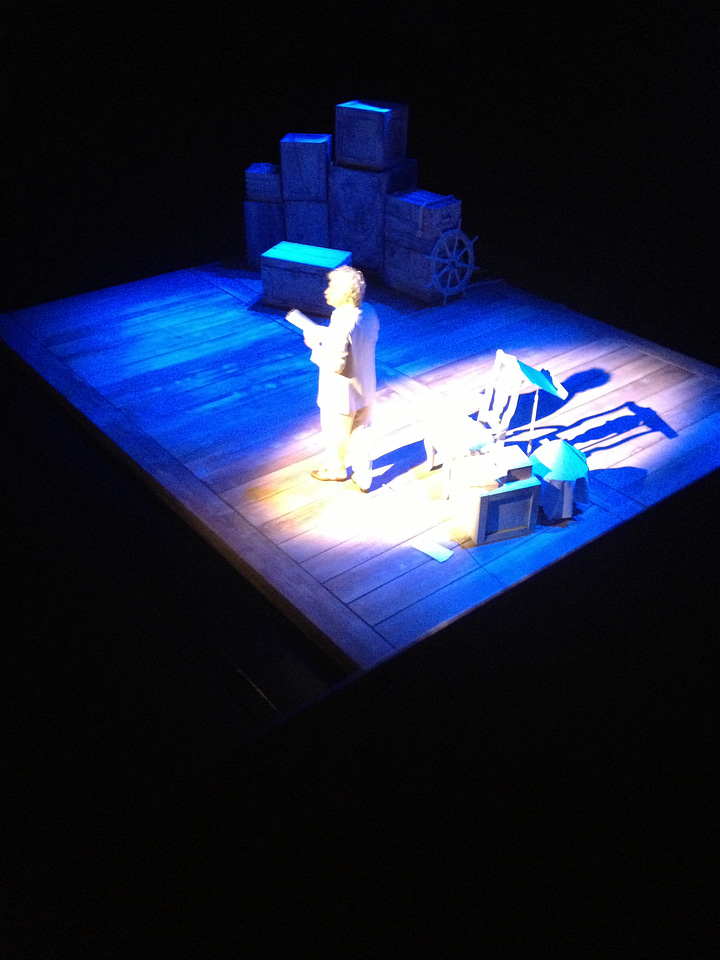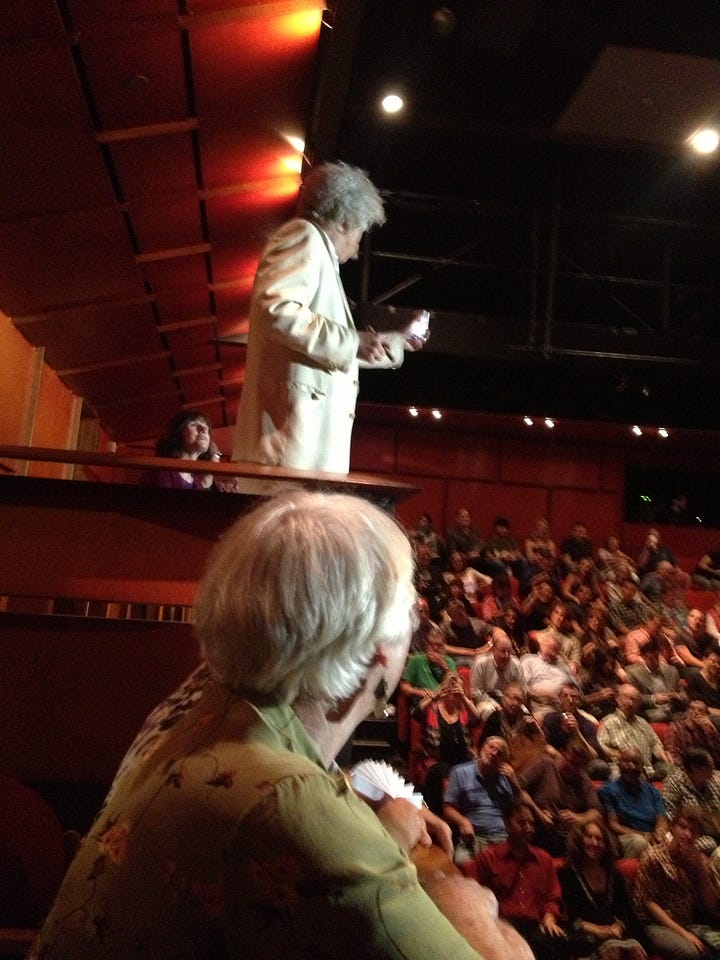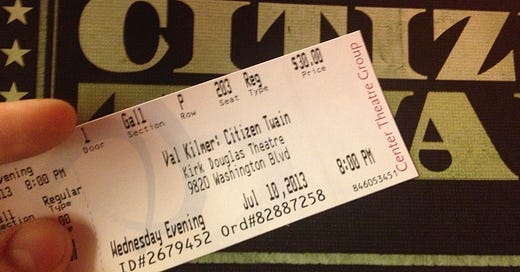In the summer of 2013, I was lucky enough to sit in the same room as Mark Twain—twice.
Val Kilmer brought him back to life in a one-man show called Citizen Twain, performed at the Kirk Douglas Theatre in Culver City. It ran from June 28 to July 28, a month-long window in which Kilmer, with all the charm and gravitas of a seasoned impersonator, became the ghost of America’s first true stand-up comedian.
There are only 317 seats in that theater. That’s fewer than your average high school auditorium. The first night, I sat in what I’ll call the crow’s nest, stage right, up high, and looking down on history. I was so moved, so genuinely entertained and inspired, that I came back the next week and sat on the opposite side. I didn’t want a better seat—I wanted a different angle on the same miracle.
Kilmer, in full white suit and wild wig, welcomed audience members as they trickled in. Not from backstage, but right there in the aisles. In full Twain. He walked among us. He cracked jokes. Asked questions. Winked. He mingled, like Twain might have in a Missouri tavern, or a San Francisco parlor, or on one of the many stages he traveled in that vaudevillian, hand-to-mouth way. It was thrilling.


The performance itself was equal parts history, philosophy, and stand-up comedy. It was: funny as hell, as I remember describing it to a friend afterward, but also wise. The last ten minutes of the show are etched into my mind. Kilmer sitting in a chair, the slow unmasking—prosthetics, wig, makeup—his drawl gradually shifting from Twain’s Missouri syrup to Kilmer’s own quieter California cadence. The man beneath the mask becoming visible in stages. By the time he took questions from the audience, he was no longer Twain, but Val—open, vulnerable, funny, generous.
I didn’t know then what was coming. In 2015, Kilmer was diagnosed with throat cancer. He lost his voice. That singular, elastic voice, capable of Jim Morrison’s baritone mysticism, Doc Holliday’s Southern menace, Batman’s clenched monotone, and Twain’s whiskey-soaked wisdom, reduced to a whisper.
I remember sitting there that night thinking, There’s no way they won’t make a film out of this. It was too good. Too rare. But life and Hollywood are both fickle bitches, and that dream slipped quietly into the pile of what-might-have-beens.
Kilmer wasn’t the first actor to inhabit Twain. Hal Holbrook carried that torch with dignity for decades, but Kilmer brought something raw and immediate to it. Less a tribute, more a haunting.
After the show, I went back to Twain the way one returns to a hometown. I read The Innocents Abroad, Twain’s first major book. It’s a travelogue of sorts, a sharp and funny chronicle of a trip he took across the Atlantic on a repurposed Civil War ship. The journey winds through the Azores, dips into Europe, and winds its way to the Holy Land—before it was Israel. The book is and, like much of Twain, occasionally grating, tinged with the racial and cultural biases of its time, yet still brimming with his distinct American skepticism.
That show changed the way I thought about Twain. More importantly, it changed how I thought about performance. About the thin line between playing a character and becoming one. I even bought the T-shirt. I still wear it. Not because it’s stylish, but because it’s a relic of something I knew that, even in the moment, was exceptional.
Val Kilmer was only a year older than my parents. That thought stays with me. Time moves fast. Stories end, sometimes mid-sentence.
But for a brief stretch in 2013, in a little theater in Culver City, I got to see one of our great shape-shifters bring Twain back to life. And I got to do it twice—with 316 other people, all of us leaning forward in the dark, listening to a voice we didn’t know we were about to lose.





This is a beautiful ode. I want to hear more about what you learned from Val about performing.